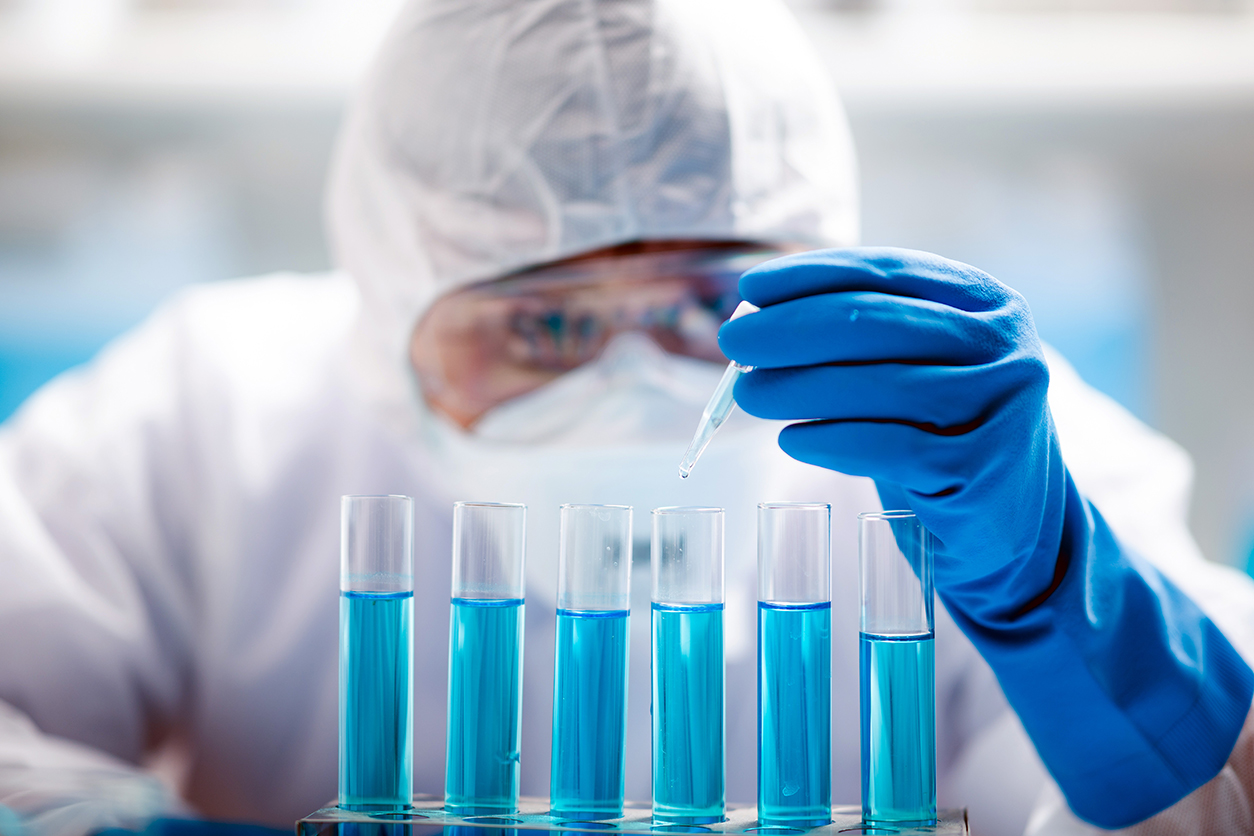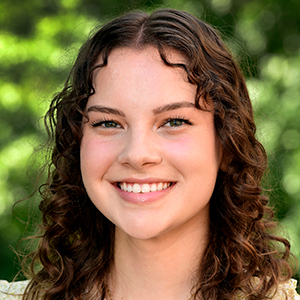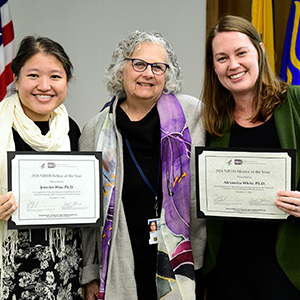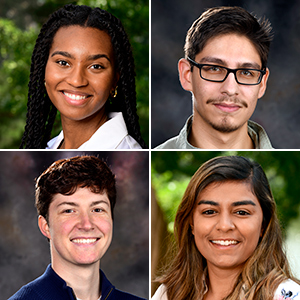Former NIEHS postdoctoral fellow Katherine Burns, Ph.D., received a National Institutes of Health (NIH) Pathway to Independence Award that helped her parlay her research training experience into a successful scientific career in academia. After completing her training at NIEHS in 2015, Burns was able to establish her own lab in the University of Cincinnati’s College of Medicine. Today, she studies the role of white blood cells in initiating endometriosis.
 Burns is conducting research on environmental factors that may lead to the development or accelerated spread of endometriosis. (Photo courtesy of Katherine Burns)
Burns is conducting research on environmental factors that may lead to the development or accelerated spread of endometriosis. (Photo courtesy of Katherine Burns)That condition involves an overgrowth of endometrial cells outside of the uterus that causes lesions and symptoms such as chronic pelvic pain, intense menstrual pain (not alleviated by over-the-counter medications), and infertility. Endometriosis, which affects about one in 10 women worldwide, is also a known cause of ovarian cancer. Currently, diagnosis is a complicated, painful process — one Burns herself has endured and is driven to improve.
While at NIEHS, she worked in the Reproductive and Developmental Biology Laboratory, and was mentored by Scientist Emeritus Kenneth Korach, Ph.D. Environmental Factor recently spoke with Burns to learn more about her research and career path since leaving the institute.
EF: Why is it important to develop diagnostic alternatives for endometriosis?
Burns: There is no cure for endometriosis, and currently no way to fully diagnose the disease without surgery. We are conducting a project funded by the National Institutes of Health [NIH] analyzing white blood cells in menstrual fluid. Our goal is to understand how those cells may play a role in the initiation of endometriosis and whether menstrual fluid can be used to develop a non-invasive diagnostic. If we can develop a way to find diagnostic markers in menstrual fluid, we would be extremely excited for patients who would avoid having surgery to get a diagnosis of endometriosis.
Environmental factors can influence how hormones act in the body, and this may make endometriosis worse. We published a paper in 2018 showing that bisphenol A and bisphenol AF — compounds found in many household cleaners, plastics, and other materials — increased the growth of endometriosis lesions in mice.
EF: How did your time at NIEHS prepare you for running your own lab?
Burns: NIEHS felt like Disneyland for scientists — so many opportunities, so many people to learn from, and such a rich environment in which to grow.
I worked on an ongoing estrogen receptor project in Dr. Korach’s lab and was given autonomy to develop a project researching endometriosis using a mouse model. As a mentor, Dr. Korach really allowed you to drive your own path. Also, being able to learn from others in his network was a great opportunity as a young scientist.
Other important mentors from my NIEHS training included Don Cook, Ph.D., Mike Fessler, M.D., and Seddon Thomas, Ph.D. Thomas has since helped guide my lab in developing more detailed immunophenotyping panels. In other words, we have put in place an in-depth analysis to understand differences in cell types and activation states in women with and without endometriosis.
 The NIH Pathway to Independence Award helps outstanding postdoctoral researchers transition into independent, tenure-track faculty positions by providing funding support to launch competitive, independent research careers. (Photo courtesy of Chokniti Khongchum / Shutterstock.com)
The NIH Pathway to Independence Award helps outstanding postdoctoral researchers transition into independent, tenure-track faculty positions by providing funding support to launch competitive, independent research careers. (Photo courtesy of Chokniti Khongchum / Shutterstock.com)EF: What drew you to science?
Burns: My mom had a master's degree in biophysics, so I was exposed at an early age to thinking about how things worked or did not work.
In our experiments, my mom and I grew tomato plants with various liquids; we used water with different pH's, milk, and even beer. We also used petri dishes to grow fungus and bacteria, in the dark inside and outside the house, to see what would grow in different places.
At eight years old, I received a Fisher Price microscope for Christmas. After discovering what this could do, I said that I planned to work at the NIH and use microscopes. I am thrilled to say that I lived my eight-year-old dream. At NIH, I used a whole array of microscopes.
EF: What is next for the Burns Lab?
Burns: I am passionate about the environmental side of our endometriosis work. With that in mind, we would like to look at other chemicals to determine whether they affect the immune system and the development of endometriosis, or cause the condition to be worse.
Citation: Jones RL, Lang SA, Kendziorski JA, Greene AD, and Burns KA. 2018. Use of a mouse model of experimentally induced endometriosis to evaluate and compare the effects of bisphenol A and bisphenol AF exposure. Environ Health Perspect 126(12):127004.
(Catherine Arnold is a contract writer for the NIEHS Office of Communications and Public Liaison.)









